July 15 – day 7 – layover and day hike
I wake up sweating. At 7am, it’s already hot in the tent. With little wind and few clouds, I prepare for a hot day hike under the intense burn of an arctic sun. Face slathered in sunscreen, protected by bug jacket, I don now grubby cotton gloves against both sun and bugs and head over to the tundra tunnel. No one is hungry with the heat, and a light breakfast of cold granola and instant milk powder suffices.
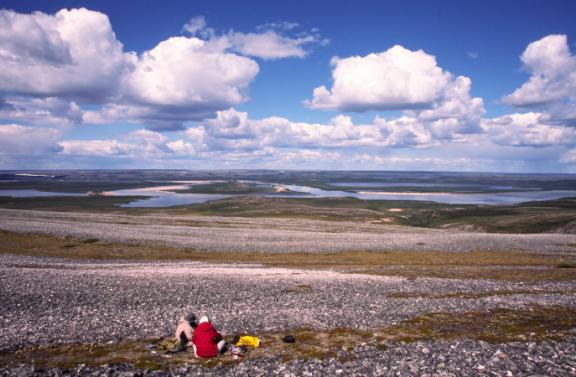
Approximately 150 feet above river level and 2 km inland, a series of raised beaches separate the river from the more barren tundra. On top of this first ridge was broken red rubble. Behind us, a black ridge….is this Tyrell’s Black Mountain (he so named in 1899)?. It’s more of a big hump than a peak. We walk around it, feet following awkwardly in the too narrow ruts of caribou trails. Well, eventually, we are drawn to the top – there, the ruins of a small cairn remain. The thin shrill scream of a peregrine falcon carries on the wind.
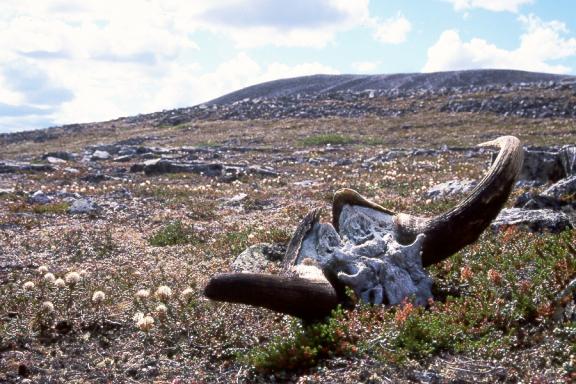
I don’t know why I’m so excited to find this musk ox skull but something about it just laying upside down, attracts me. It’s heavy: at least 30 pounds. The horns are well knacked by rodents or foxes or wolves, the nose bone is thin and weathered. It’s been here long enough to fertilize a thick clump of lingon berry, that flourishing with the skull’s decay.
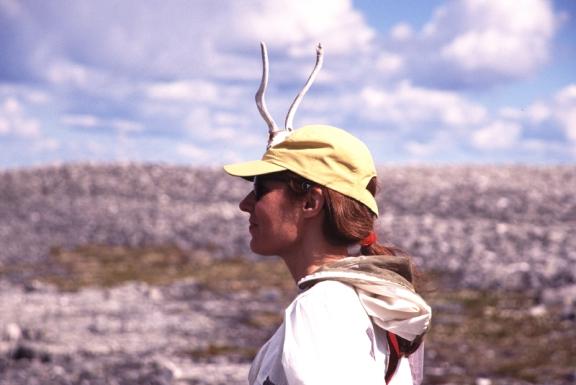
Musk ox aren’t the only creatures which died here…a tiny skull with antlers and a bit of skin still attached lay amongst the broken rock. Wolf kill? Died while giving birth? Starvation? So many ways to die. Besides bone, the other thing which remains is shit: liberally scattered around are musk ox pellets and caribou turds with a sprinkling of arctic hare.
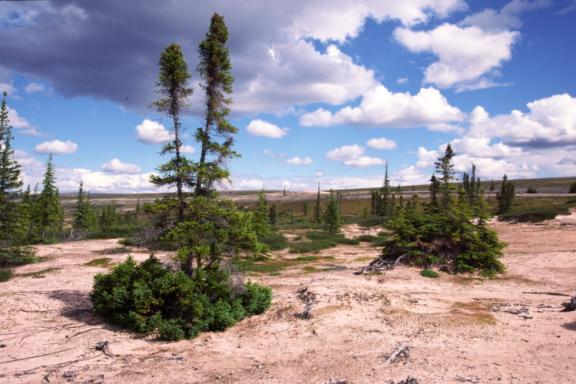
At the base of the ridge lies a wet hummocky bowl with small pond as its centre piece. Saturated mosses are dotted with the white or pink cloudberry flowers. Higher up on slightly drier soil, the fruit is already forming. Dead fall from ancient spruce (Hall claims up some 1,000 years old) trunks twisted, rest in sand surrounded by pine cones from the still living trees. Empty wolf dens dot the slopes, long tunnels ending somewhere underground (no, I don’t explore inside). Piles of white scat and fragments of shattered caribou leg bones lie in abundance.
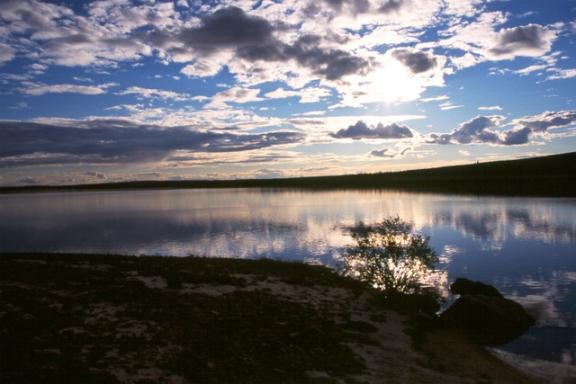
It’s been a long hot day – 7 hours and 13 km of walking, our legs enjoying the stretch out of the canoes. Back at camp, the relentless sun has heated the tundra tunnel interior to 33C. No matter how hot, it’s a sanity saver, a refuge from bugs plus a welcome dry place linger, cook and eat in the rain. The birds don’t mind the heat or the bugs, songs filling the space across sleeping river. As the day fades into evening (11pm sunset), I fade as well.